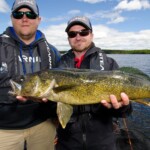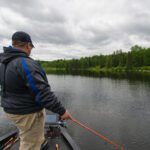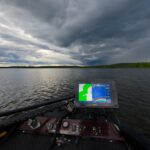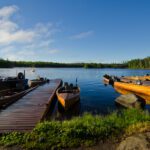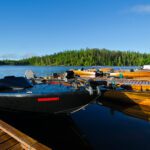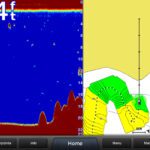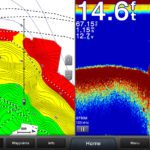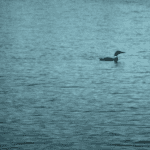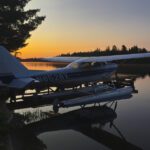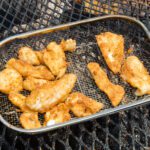This Walleye episode took us back to the wonderful district of Algoma: 22,000 square miles of fish-filled wilderness encompassing the largest crown game reserve in the world, the Chapleau Crown Game Reserve. And Pete’s in the middle of it, at Loch Island Lodge in Wabatongushi Lake. He was there on a special mission with help from electronics expert, Danny Thompson, the Garmin Regional Sales Manager for the Great Lakes Region based out of Minnesota.
OUR ESTEEMED GUEST
Danny is an avid Walleye fisherman and tournament angler in Minnesota, where he regularly competes in the AIM Minnesota Series. He has won a state championship and has had around five Top Ten finishes in the last three years. These are great credentials.
As far as his Garmin duties, he’s been finding ways to better utilize their great technology for the Upper Midwest and Canadian fisherman by using Panoptix, Quickdraw, and other great technologies to target Walleye, Pike, muskie, Crappies, and more.
“I enjoy using my Garmin equipment to search out big fish so I can be more effective in my fishing,” says Danny. “Especially tournament fishing.”
THE CONDITIONS
On this mid-June Walleye fishing trip, they had a typical calendar oriented situation going on: a Mayfly hatch.
“It’s something I’d much rather be in front of,” says Pete. “The Mayflies emerge from the depths and the fish, including Walleye, gorge on them. Essentially, it means catching fish using anything that doesn’t look like a Mayfly is going to be very difficult.”
Another situation somewhat unique to this trip is that the owner of the lodge doesn’t allow boat access. Since it is a drive-to lake, Pete was eager to bring the FNC1 for the trip. So he proposed a one-time deal: Since Pete and Danny had groundbreaking new fishfinder/chartplotter technology, they would re-chart some of the lodge’s hotspots, producing a chart ten times more accurate than those the lodge was already using. With that offer, Loch Island readily agreed to allow the Princecraft in.
LATEST IN ELECTRONICS
Let’s explain a bit on underwater charts. There are two types: bathymetric and hydrographic. A bathymetric chart is an accurate presentation of the underwater bottom features; a hydrographic chart is more simplified, for the purpose of safe navigation. These are created to help boaters avoid underwater hazards. As anglers, we much prefer detail!
The new Garmin technology that Danny concentrated on during this trip is called Quickdraw Contours. This sophisticated sonar sends out enough pings to scan 150 feet on either side of the boat and, in real time, draws new contour lines on our chartplotter in one-foot increments. This can all be done while moving at up to 30 miles per hour.
This new technology identifies bottom structure like never before.
QUICKDRAW
We’ve talked about structure before, but let’s review it so you can understand what Quickdraw is actually doing. Structure refers to any change in contour of the bottom of a body of water that causes a change in depth. Points, vertical shorelines like bluff walls, humps, submerged islands, ledges and old river or creek channels are some examples. They all have the same common denominator: an edge—a change in depth. And that’s what Quickdraw does: It draws a detailed picture of the lake bottom in one-foot increments.
What you get is a highly defined, topographical chart—with contours—of the water you’re fishing. Drastic changes in depth, for example, are seen as a bunch of lines squeezed together, indicating a drop-off and a possible spot to find fish nearby. By the way, this is not as complicated as it sounds; let the plotter do the hard work and you just reap the benefits!
MOW THE LAWN
As you mow the lawn (think of cutting your grass; cutting a new swath directly beside the last one to cover the entire area), going back and forth over an alleged hotspot, contour lines are marked and recorded onto an SD card. Once complete, you can come back to a GPS-charted and marked location at any time with any compatible Quickdraw unit and catch fish!
In a nutshell, Garmin’s new Quickdraw feature allows anglers to create a brand new map of any body of water they are fishing with incredibly detailed one-foot contours.
With the aid of the latest and greatest CHIRP technology (Compressed High-Intensity Radiated Pulse), an accurate and permanent picture is drawn right before your eyes.
Your new Quickdraw map is recorded and saved on an SD card, which can then be viewed on any device in the Echomap and GPSMap Garmin lineup. And finally, you can even share your new maps on the Garmin Connect community.
CORNELIUS THE LOON-A-TIC
This trip to Northern Ontario was pretty typical for the region. Pete and Danny caught great numbers of fish, and some real quality as well. Most importantly, they came back with a great fishing story in the end.
The boys mapped out a good looking point with the Quickdraw feature, then scanned it thoroughly with their traditional sonar and ClearVu. They saw a group of fish on a tight little contour and dropped down some vertical jigs. Immediately, they started catching fish.
While fighting a decent Walleye, Pete noticed something strangely different about the battle: a loon swimming underwater and chasing the hooked fish! This crazy loon was literally trying to steal Pete’s catch! And believe it or not, the fish was way too big to fit in a loon’s mouth. With a flap of its submerged wings, the loon was gone as fast as it came in.
Back at the lodge, Pete and Danny recounted this bizarre incident. “We found out later at the lodge that Cornelius, the infamous loon, was well known in these parts as a stalker of boats and attacker of hooked fish.”
You never know what to expect on an Algoma fishing trip!
STARTING A NEW JOURNEY
“This trip to Loch Island lodge was very rewarding,” says Pete. “Although catching big Walleye was tough due to the Mayfly hatch, I came out of it with newfound knowledge of how to completely revise old, outdated hydrographic charts and start a new journey in learning how to interpret, with the finest of detail, every lake and river I hit from here on out.”
Now we’ve got a great new weapon to add to the arsenal.
SPECIAL THANKS
- Loch Island Lodge
- Go Fish Ontario
- Algoma Region
- Danny Thompson, GARMIN
- Cornelius loon footage provided by:
Steven & Zach DeVrou




